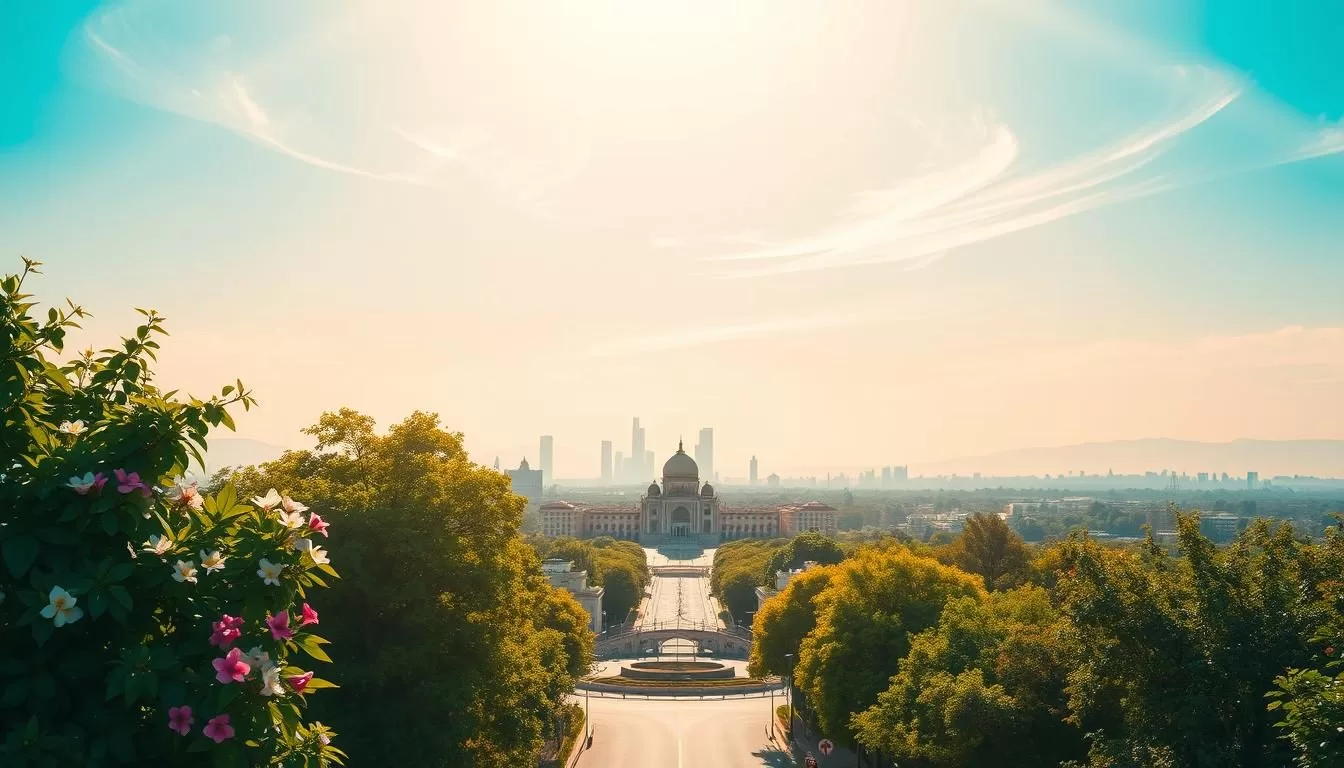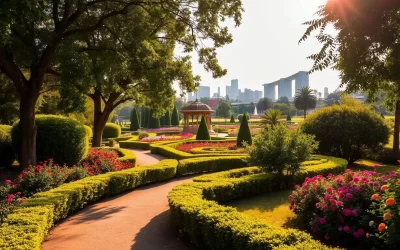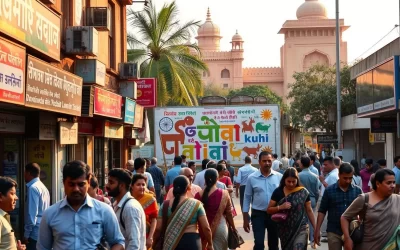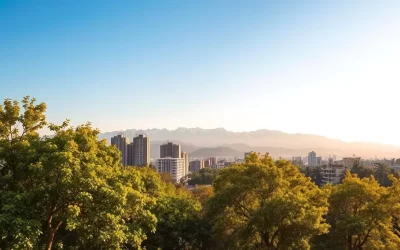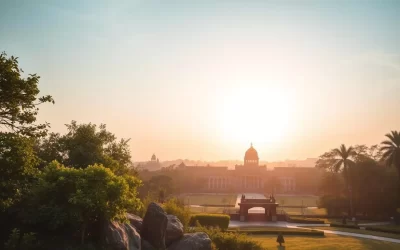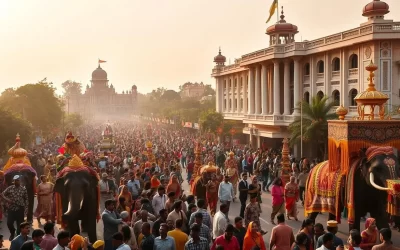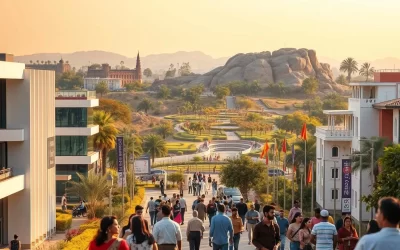Welcome to our comprehensive guide for planning your perfect trip to this unique union territory. Located at the foothills of the Shivalik range, Chandigarh’s climate is characterized by four distinct seasons.
Understanding the weather patterns is crucial to making the best time to visit. You’ll want to know when to expect pleasant temperatures, rainfall, and humidity levels to make the most of your trip.
Our guide will help you identify the ideal time to enjoy Chandigarh’s attractions, whether you’re interested in architectural marvels, cultural experiences, or outdoor activities, ensuring a weather-savvy visit.
Chandigarh: The City Beautiful at a Glance
Nestled at the foothills of the Shivalik range, Chandigarh is a city that seamlessly blends natural beauty with architectural marvels. As you plan your travel to this unique country, understanding its geography and climate is essential.
Geographic Location and Climate Overview
Chandigarh sits at the foothills of the Shivalik range in northern India, serving as the capital of both Punjab and Haryana states while being a union territory itself. The city experiences a subtropical climate with four distinct seasons: winter, spring, summer, and monsoon, each offering a different experience for visitors over time.
Key Attractions in Chandigarh
Key attractions include the iconic Rock Garden created by Nek Chand from recycled materials, the serene Sukhna Lake, and the vibrant Zakir Hussain Rose Garden. When you visit India, Chandigarh is a must-visit destination, offering a blend of nature and architecture over several days.
Understanding Chandigarh’s Seasonal Weather Patterns
Understanding the seasonal weather patterns in Chandigarh is crucial for planning a trip. The city’s climate is influenced by its geographic location and proximity to the Shivalik Hills, resulting in a diverse range of weather conditions throughout the year.
Temperature Variations Throughout the Year
Chandigarh experiences dramatic temperature variations throughout the year. Winters (November to February) can be quite chilly, with temperatures occasionally approaching 5°C (41°F), while summers (May to June) can be scorching, with highs frequently exceeding 40°C (104°F). Spring (March to April) brings pleasant temperatures, ranging from 27-34°C, making it an ideal time to visit.
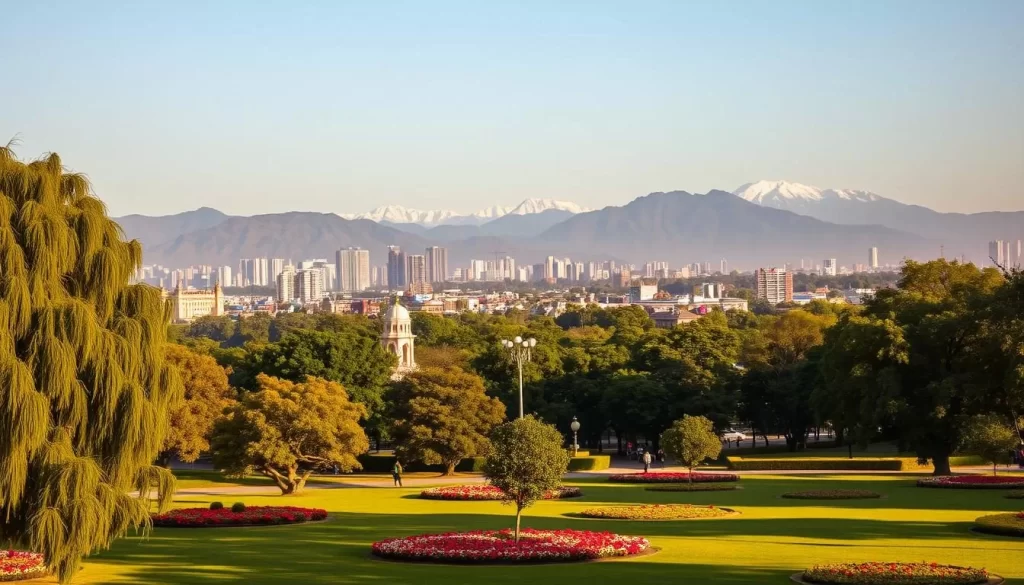
Rainfall and Humidity Considerations
The city’s monsoon season (July to September) is characterized by significant rainfall, with an average annual rainfall of around 1100mm, of which over 70% is concentrated during these months. Humidity levels fluctuate significantly, from comfortable 40-50% during winter and spring to oppressive 70-80% during the monsoon months, which can make even moderate temperatures feel uncomfortable.
By understanding these weather patterns, you can better plan your trip to Chandigarh, choosing the best time to visit based on your preferences. Whether you’re looking for pleasant spring weather or are prepared for the rains and humidity of the monsoon season, knowing what to expect will enhance your travel experience.
Winter in Chandigarh (November to February)
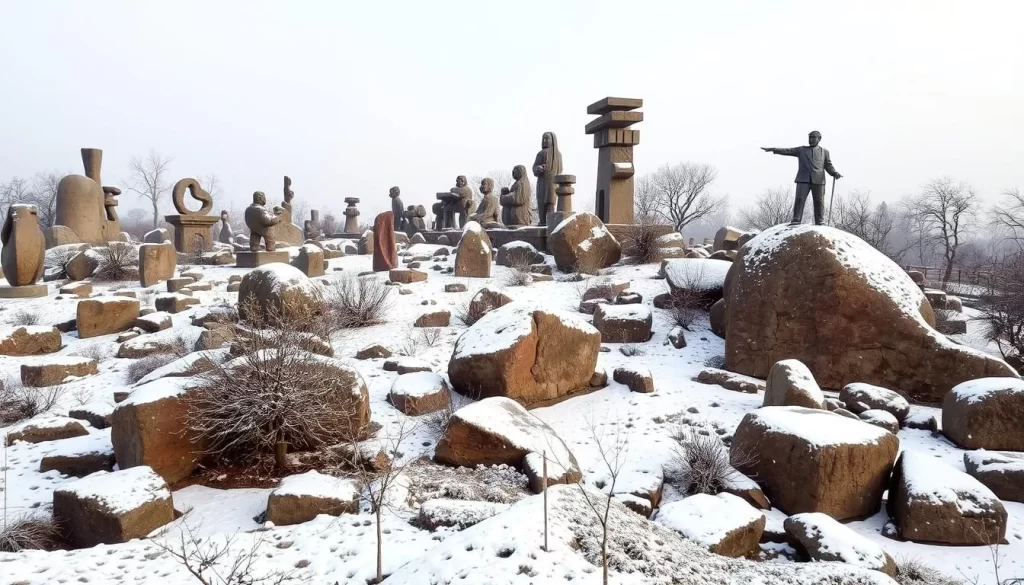
If you’re planning to visit Chandigarh during the winter months, you’re in for a treat with its cool weather and exciting events. Winter in Chandigarh, which spans from November to February, is a great time to explore the city’s outdoor attractions and experience its rich cultural heritage.
Temperature Range and Weather Conditions
During the winter season, Chandigarh experiences pleasantly cool days with temperatures ranging from 15°C to 25°C (59°F to 77°F), while nights can be quite chilly, occasionally dropping to 5-7°C (41-45°F). December and January are the coldest months, sometimes accompanied by morning fog that typically clears by mid-day, revealing sunny, clear skies perfect for outdoor exploration.
Winter Activities and Attractions
The winter season offers ideal conditions for exploring Chandigarh’s outdoor attractions like the Rock Garden, Sukhna Lake, and the sprawling Rose Garden, which reaches peak bloom in February during the annual Rose Festival. You can also enjoy leisurely strolls through the city’s numerous gardens and parks, or take part in the cultural events and festivals that take place during this time, such as Lohri celebrations in January and the Chandigarh Carnival.
Pros and Cons of Winter Visits
Visiting Chandigarh in the winter has its advantages and disadvantages. On the plus side, the comfortable daytime temperatures make it perfect for architectural tours of Capitol Complex and outdoor activities. However, you’ll need to pack warm clothing for the early mornings and evenings. Overall, winter is a great time to experience the best of Chandigarh’s culture and natural beauty.
Spring in Chandigarh (March to April)
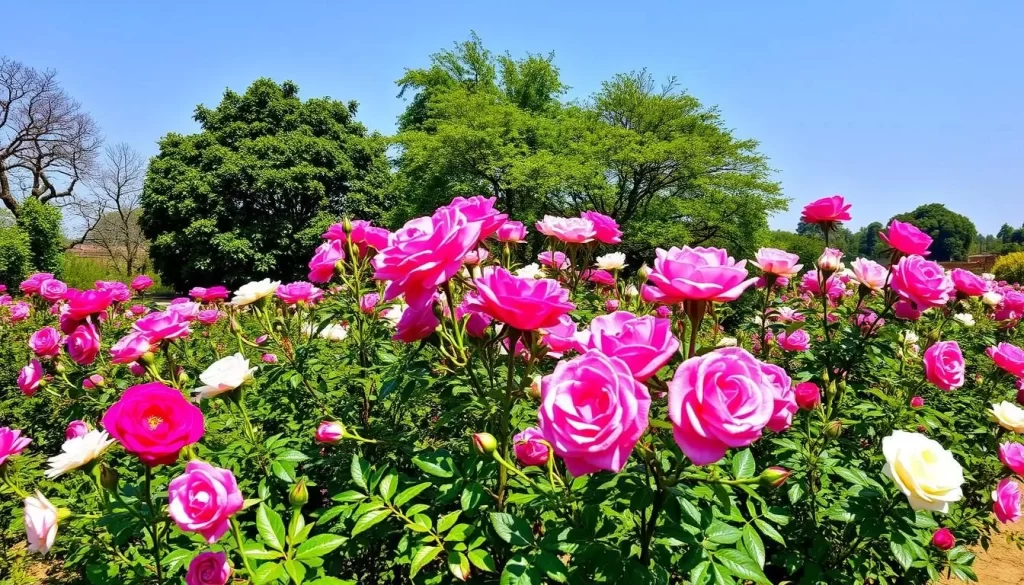
As spring unfolds in Chandigarh, the city transforms into a vibrant landscape, making March and April ideal months to visit. You can enjoy pleasant temperatures and a range of activities during your trip.
Temperature Range and Weather Conditions
During spring, Chandigarh experiences temperatures ranging from 20°C to 32°C (68°F to 90°F), creating ideal conditions for exploration. Early March is particularly comfortable, with cool mornings and warm afternoons, while late April can see occasional hot days reaching 35°C (95°F).
Spring Activities and Attractions
Spring is a great time to explore Chandigarh’s gardens, such as the Zakir Hussain Rose Garden and the Terraced Garden in Sector 33, which are in full bloom. You can also experience the city’s cultural festivals, including Holi (the festival of colors) and Baisakhi (the harvest festival), offering a glimpse into local traditions.
Pros and Cons of Spring Visits
The shoulder season aspect of spring means fewer tourists compared to winter, making it easier to explore popular attractions like Rock Garden and Sukhna Lake. However, you should be prepared for rising temperatures towards the end of April. Overall, spring is a great time to visit if you prefer milder weather and smaller crowds.
Summer in Chandigarh (May to June)

Chandigarh’s summer, spanning May and June, is characterized by sweltering temperatures. The city experiences intense heat during these months, with daytime temperatures often exceeding 40°C (104°F) and occasionally reaching as high as 45°C (113°F).
Temperature Range and Weather Conditions
The summer season in Chandigarh is marked by hot, dry days with occasional pre-monsoon showers towards late June. These showers provide temporary relief from the heat but also increase humidity levels. You can expect the temperature to soar during the day, making it essential to plan your activities accordingly.
Summer Activities and Indoor Attractions
During summer, it’s advisable to limit outdoor activities to early mornings (before 9 AM) and evenings (after 6 PM). You can spend your time exploring air-conditioned indoor attractions like the Government Museum and Art Gallery or shopping in Sector 17. The evenings offer a pleasant atmosphere for enjoying Chandigarh’s vibrant culinary scene, particularly in Sector 26’s restaurant row.
Pros and Cons of Summer Visits
While the heat can be overwhelming, summer has its advantages. The high temperatures drive many locals and tourists away, resulting in lower hotel rates and less crowded attractions. This makes it a potentially economical time to visit Chandigarh for budget travelers who can tolerate the heat. You can enjoy a more peaceful experience at popular spots during your visit.
Monsoon in Chandigarh (July to September)
Monsoon in Chandigarh is a time of rejuvenation and natural beauty. The city’s landscape transforms as the monsoon rains bring life to its surroundings.
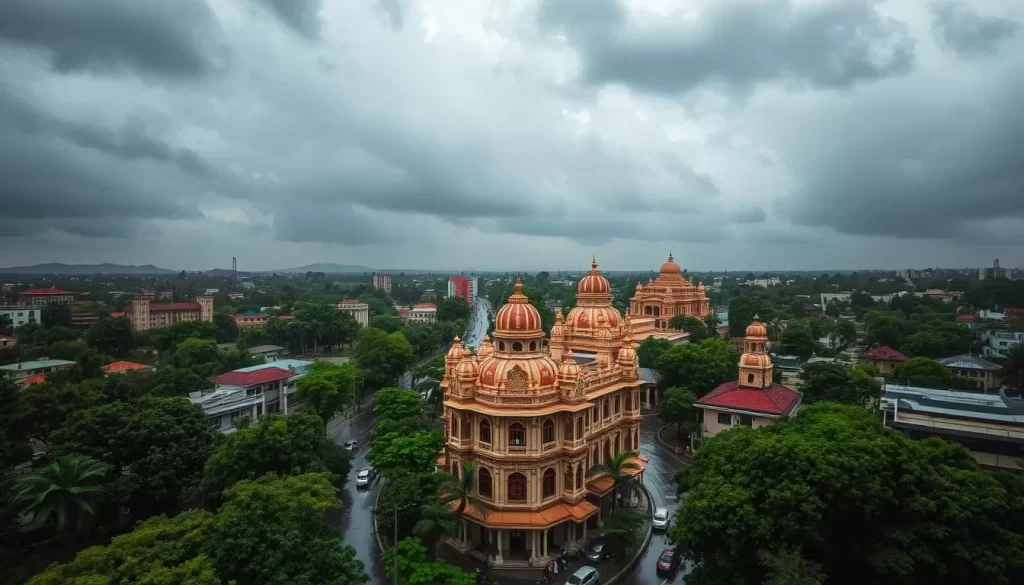
Rainfall Patterns and Weather Conditions
The monsoon season in Chandigarh is characterized by moderate to heavy rainfall, averaging 200-300 mm per month between July and September. August is typically the wettest month.
Temperatures range from 25°C to 35°C (77°F to 95°F), but high humidity levels of 70-80% can make it feel warmer.
Monsoon Activities and Attractions
The monsoon brings spectacular beauty to Chandigarh’s landscapes. Sukhna Lake reaches full capacity, and the Leisure Valley turns lush green. The Shivalik Hills are visible with cascading waterfalls on clear days.
This season offers unique photography opportunities with dramatic skies and vibrant greenery.
Pros and Cons of Monsoon Visits
If you don’t mind ducking inside during downpours, you’ll enjoy fewer tourists and maybe cheaper accommodation. However, be prepared with waterproof gear and flexible itineraries.
The lush landscapes and vibrant greenery make it an attractive time to visit for nature lovers.
Chandigarh (UT), India: Best Months for a Weather-Savvy Trip
For a weather-savvy trip to Chandigarh, identifying the right time to visit is key to enjoying the city’s attractions. The city’s climate varies significantly throughout the year, making some months more suitable for tourism than others.
October to November: The Ideal Window
Visiting Chandigarh during October and November is highly recommended due to the pleasant weather conditions. Temperatures range from 15°C to 30°C (59°F to 86°F), with low humidity and clear skies following the monsoon’s departure. This period offers the perfect blend of a lush landscape from recent rains and comfortable temperatures ideal for exploration.
December to February: For Cool Weather Enthusiasts
If you prefer cooler weather, the months of December to February are ideal. Daytime temperatures are pleasant, making it suitable for outdoor activities. However, it’s advisable to pack warm clothing for early mornings and evenings. This period is also characterized by festive celebrations, adding to the city’s charm.
March to April: The Spring Sweet Spot
March and April bring spring to Chandigarh, offering another excellent window for visitors. The city enjoys warm days and cool evenings, with gardens in full bloom. While late April can occasionally see early heat waves, the overall weather remains favorable for tourism. Visitors can enjoy the city’s attractions and cultural events during this time.
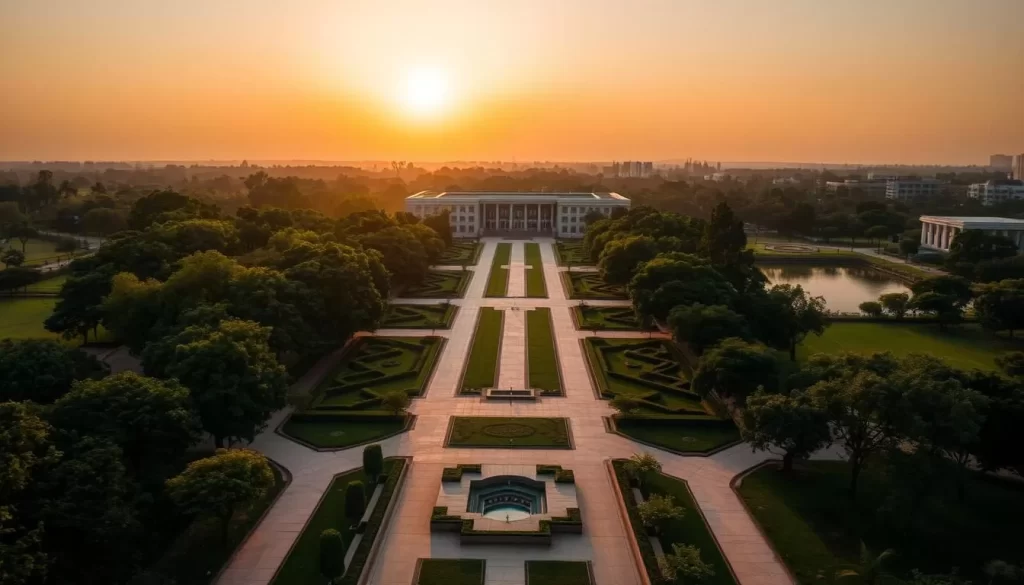
Festivals and Events Calendar in Chandigarh
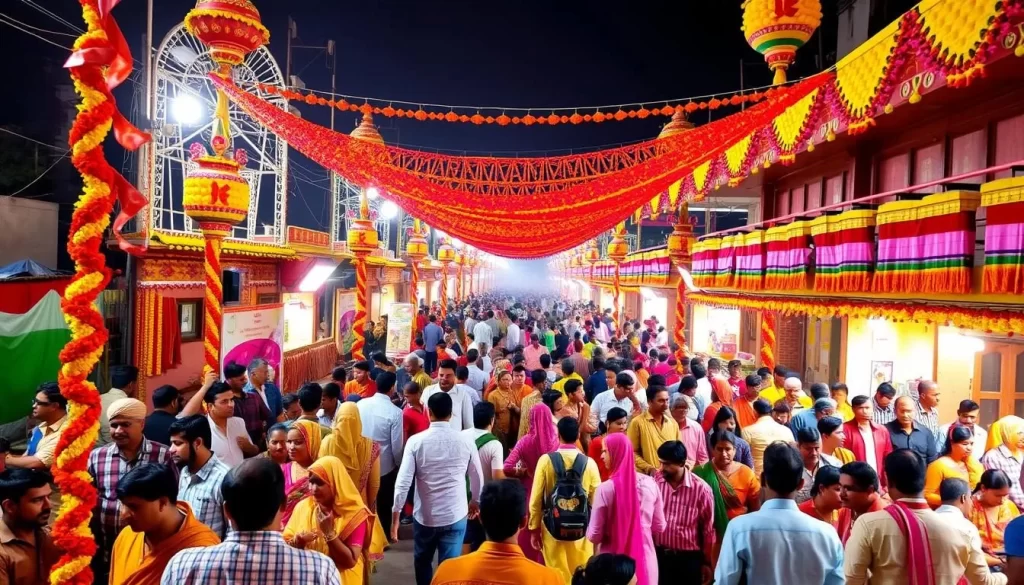
Chandigarh’s cultural calendar is filled with vibrant festivals and events that take place throughout the year. The city’s festivals are a reflection of its rich cultural heritage, making it a great destination to experience the diverse traditions of India.
Seasonal Celebrations Worth Planning Around
The city’s festival calendar offers a range of celebrations that are worth planning around. For instance, the Rose Festival in February transforms the Zakir Hussain Rose Garden into a magical time with thousands of rose varieties, accompanied by cultural performances and competitions. In the spring, the Holi festival in March fills the city with colors, music, and traditional sweets, while Baisakhi in April marks the Punjabi New Year with folk dances, music, and harvest celebrations.
Cultural Events Throughout the Year
Chandigarh hosts various cultural events throughout the year. Summer features the Mango Festival in June, showcasing over 150 varieties of mangoes with tasting sessions and culinary competitions. The monsoon season coincides with the Teej Festival (July/August), celebrating the arrival of monsoon with traditional swings, henna application, and folk songs. The pleasant post-monsoon and winter months host the Chandigarh Carnival (November), International Crafts Mela (November/December), and New Year celebrations, making this period particularly rich in cultural events that complement the favorable weather conditions.
Conclusion: Planning Your Weather-Perfect Chandigarh Trip
As you plan your trip to Chandigarh, understanding the best time to visit is crucial for a memorable experience. The ideal time to visit India and explore Chandigarh is during October-November and February-March, when the weather is balanced, making it perfect for both indoor and outdoor activities.
Chandigarh serves as an excellent starting point for exploring North India’s golden triangle (Delhi-Agra-Jaipur) and other nearby destinations like Shimla and Kasauli. Allocate at least 2-3 days to fully appreciate Chandigarh’s unique urban planning, cultural institutions, and natural attractions. Whether you’re combining it with a classic Rajasthan tour or visiting during the monsoon rains, Chandigarh offers a distinct experience.
